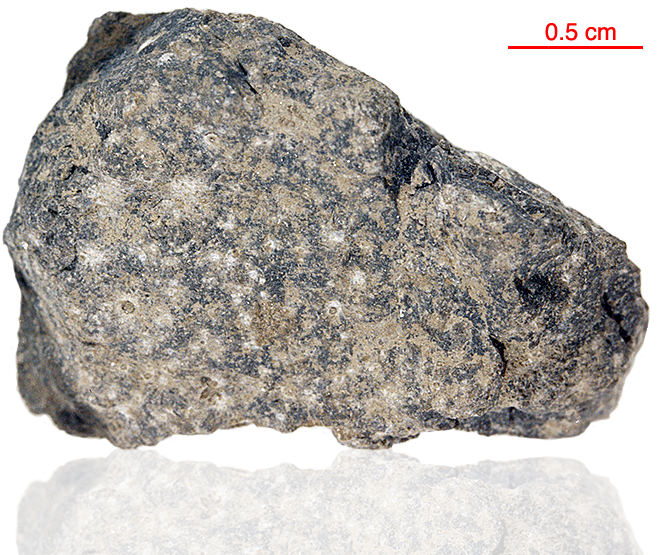
Fact sheet
67615 is unusual because it has olivine as the main mafic mineral (rotation 1). It has abundant clasts of plagioclase with a groundmass that is described as micropoikilitic. Its chemistry places it with a group of granulitic breccias. Rotation 2 shows a fragment of variolitic impact melt.
The sample weighed 8.8 grams before analysis. Ages between 3.75 and 3.85 billion years (Ar/Ar) are reported for two fragments of impact melt.
Further details of this and other Apollo samples are here: http://curator.jsc.nasa.gov/lunar/
The Apollo 16 landing site was in the hilly region around Descartes crater in the lunar highlands. The landing spot was chosen to allow the astronauts to gather geologically older lunar material (Descartes Formation and the Cayley Formation) than the samples obtained in the first four landings, which were in or near lunar maria.
The mission lasted 11.1 days, with a stay on the lunar surface of 71 hours. The crew were on the lunar surface for 20.2 hours during which they traversed approximately 27 kilometers and collected approximately 96 kilograms of samples.
Apollo 16 was launched on 16 April 1972.






